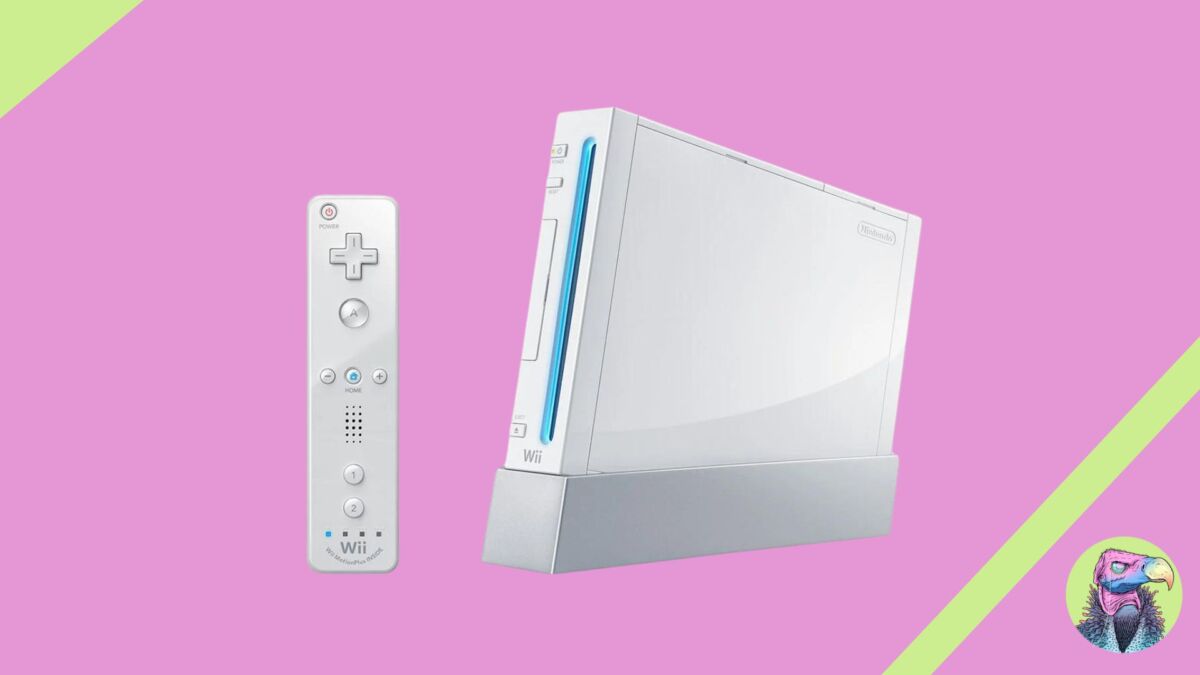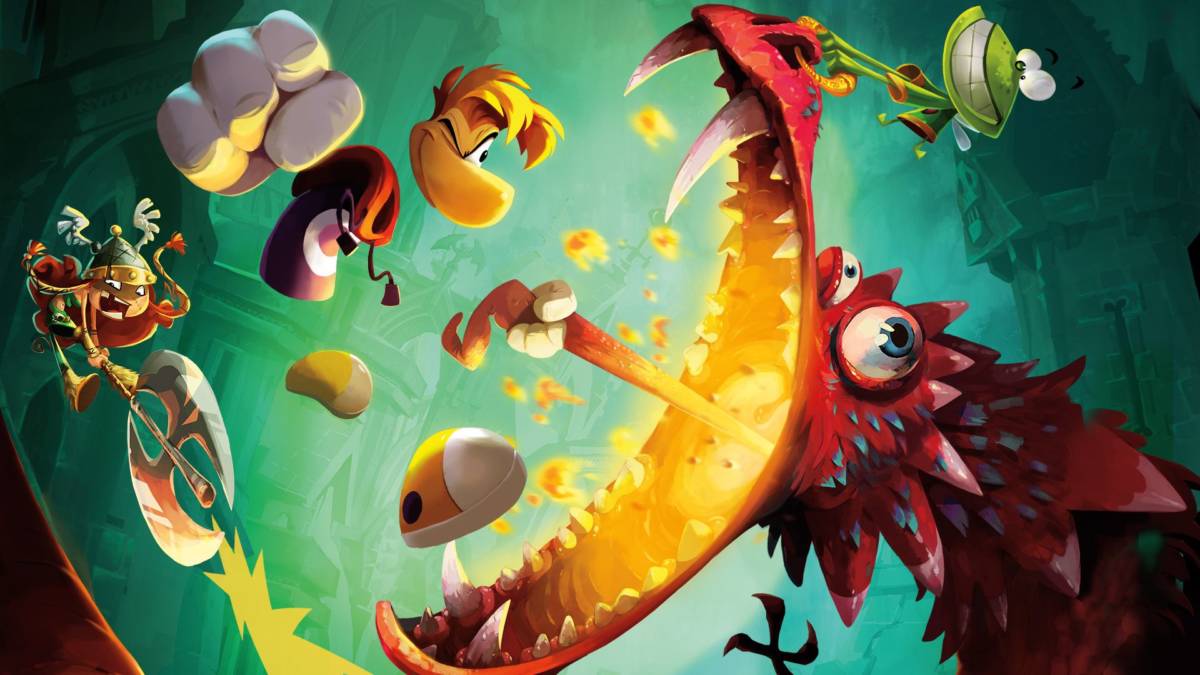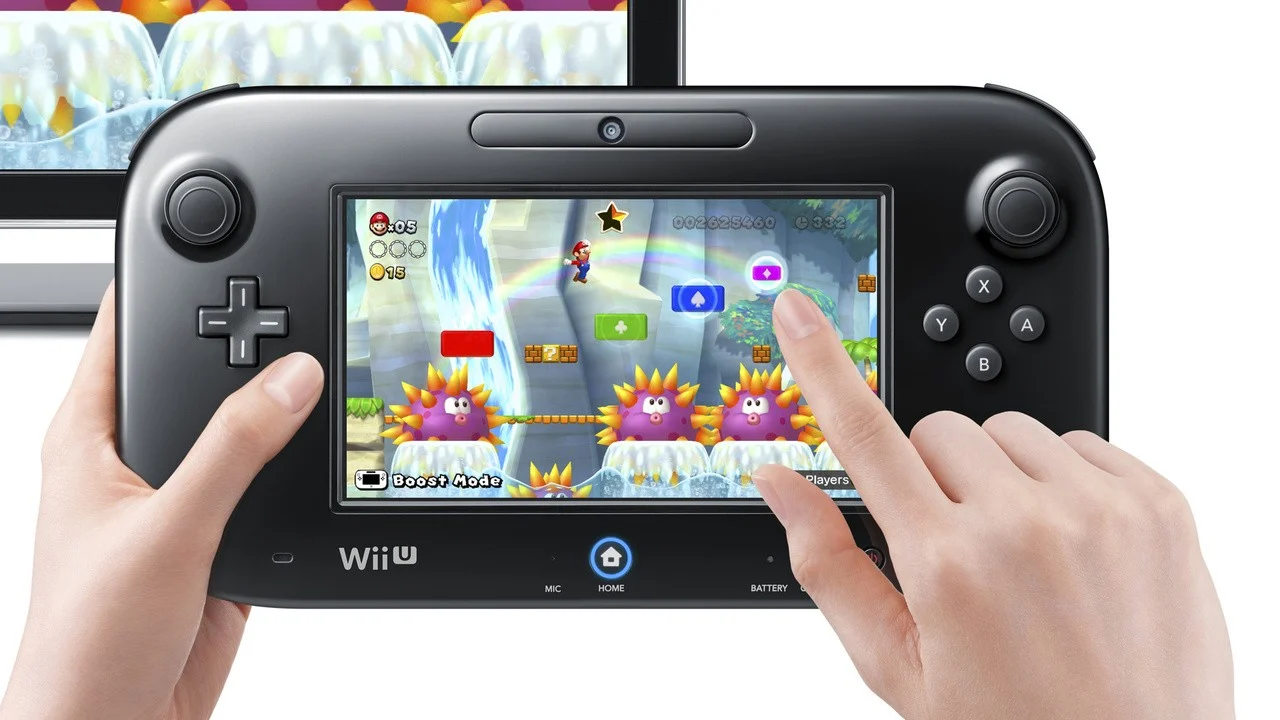When Sega was struggling in the 90s and early 2000s, two things that helped Nintendo to avoid the same fate were the absolutely gigantic Pokémon brand and the ability to deliver a system that at least found a specific niche in the market, like the GameCube. The latter changed with the release of the Wii U on November 18th, 2012 in the US, November 30th in the UK, and December 8th in Japan. Coming off the heels of the deliriously successful Wii, the console that forced you to play bowling with grandma even if you desperately didn’t want to, the Wii U bombed and bombed badly.
Critics and players by and large reacted to the Wii U’s new ideas with hostility, criticizing a number of flaws in the hardware, along with issues pertaining to the software available at time of launch and beyond. The Wii U was a mess in every possible way. The launch was a nightmare, with a dreadful name that no one seemingly liked. The marketing failed to land, as well. You name it. The Wii U couldn’t get a break. The results of this promising console were so catastrophic, the top brass at Nintendo admirably took serious pay cuts to avoid layoffs.
Wouldn’t that be neat if it wasn’t such an anomaly?
The Wii U’s history is a short, frustrating one. The console did see some really good games, and there are still a ton of fans for what might be Nintendo’s most beleaguered system (take a lap, Virtual Boy, and rest well, friend). There’s also a lot of boneheaded choices behind the launch of a console Nintendo would abandon early on in its life cycle, with the Wii U being officially discontinued on January 31st, 2017. The third-party support, for example, was awful — remember when promised exclusives like Rayman wound up on multiple platforms? We do.
We’re going to figure out exactly how the Nintendo Wii U failed, and why it almost completely wiped out the success Nintendo had experienced with its predecessor. Did Nintendo simply drop the ball? Was it a matter of bad timing? Let’s figure out what really happened when the Wii U debuted more than a decade ago.
Following Up the Wii

As far back as 2008, development on the Wii U began as a response to the various limitations of their runaway hit Wii console. A lack of support for HD graphics being one of the main complaints Nintendo wanted to address in their follow-up, as well as a limited network infrastructure that made the Wii, despite its success, look a little less impressive when compared to the PS3 and Xbox 360.
Nintendo was no doubt pleased to see themselves back in serious contention again after the disappointing sales for the GameCube, and hoped the system that succeeded the Wii would bring back some of the gamers who saw the Wii as strictly a system for casual gamers.
“The keyword for our presentation at this year’s E3 is ‘Deeper and Wider’,” the late Nintendo President and CEO Satoru Iwata was quoted as saying when the Wii U got a formal announcement and presentation at E3 2011. “With Wii U,” he continued, “I would like to offer this proposal with that idea.”
That sounded fine, and at least initially, the Wii U seemed pretty exciting. Better online connectivity than the Wii. Some interesting exclusives. Games presented in HD. Backwards compatibility was also announced, making the Wii U one of the only Nintendo consoles to ever have this feature. Even the controller had some potential, offering a large touchscreen that would hopefully add unique depth to gameplay and interactivity. Nintendo was ready for the next generation, but as the release date for the console got nearer and nearer, several potential issues became increasingly clear.
Launch Day for the Wii U
Launching in November and December of 2012, the Wii U initially seemed to do fine. Two versions were available, with the basic white model including 8GB of memory and a $299 US price tag. For approximately $349 US you could get 32GG of memory and a game (Nintendo Land or ZombiU). Nintendo’s launch day library would include a pretty long list of games, with 32 titles featuring New Super Mario Bros U., Assassin’s Creed III, Batman: Arkham City, and others.
The initial launch started off as nothing to be ashamed of. Nintendo’s entire U.S. allotment of 400,000 consoles was gone within the first week. 40, 000 units were sold in the UK over its initial weekend, while in Japan sales of the new system hit approximately 600,000 in its first month. While not staggering sales figures, they were solid enough for many to believe that Nintendo would build on that as better games were released, but then something unfortunate happened.
Simply put, the Wii U just didn’t sell very much after the initial launch window proved to be enthusiastic, if not a bit underwhelming. Nintendo tried price cuts, marketing that better explained exactly what the Wii U had to offer and published some all-time great first party software. But with the litany of issues plaguing the Wii U console, not enough people were ever going to play games like Splatoon, Xenoblade Chronicles X and New Super Mario Bros U.
The Wii U console sales numbers never improved, despite these commendable efforts by Nintendo to turn things around. We can look at several reasons as to why things became so dire for the Wii U so early on its lifetime.
Terrible Marketing, AKA What Marketing?
When you ask someone why the Wii U was a relative bomb compared to most of Nintendo’s consoles, one of the first answers you will invariably get is that the marketing was confusing at best and non-existent at worst. It’s hard to argue with that when it’s so difficult to even recall a Nintendo Wii U commercial or advertisement that doesn’t feature Steve from Stranger Things. This is particularly odd in an age of console manufacturers making sure everyone alive or dead knows there’s a new system on the way.
There are entire articles and videos dedicated to how dreadful the Wii U commercials were. They failed to explain that this was even a new console, as initial marketing focused on the unique touchpad controller, leading some to believe that the Wii U was simply a new attachment for the original Wii console, as opposed to a brand-new system that Nintendo really, really, really wanted you to buy. Many believe the Wii U reveal at E3 2011 did a terrible job of even explaining what the Wii U was, let alone selling people on the idea of getting one.
And when ads weren’t confusing, they were so cringe-inducing you could damage your central nervous system from flinching too much.
Others argue that Nintendo just didn’t do enough to promote the system until it was close to launch. And even then, people just didn’t seem to get it. The Wii U name didn’t really help matters either, further confusing parents and anyone else who didn’t actively keep up with Nintendo news and developments. Was the Wii U an attachment? Did you need a Wii console to use it? Nothing was made clear, and few bothered to dig deeper.
Bad Third-Party Support: Where Are the Exclusives?

Nintendo has always prided themselves on brilliant first-party releases featuring their biggest and brightest IP. But third-party support is crucial to success, too, and Nintendo simply didn’t have it. When they did have a strong third-party game, such as Rayman Legends, it was available on better and more popular systems. Rayman Legends particularly stung for Nintendo, as the game was originally supposed to be an exclusive for the Wii U before Ubisoft saw the figures for the Wii U and had a change of heart. Can you really blame Ubisoft for that?
We’re exaggerating a little when we say Nintendo didn’t have any third-party support, but truly, Nintendo just didn’t have enough to get them through that rocky first year for the system. The first year for the Wii U saw a system practically anemic for new and exciting games, and that was one of the most significant contributions to its demise. It wasn’t helping that companies like Electronic Arts saw absolutely zero point in putting serious development time and resources behind the Wii U, with an infamous series of tweets from a former executive with the company signaling just how poorly the Wii U was being received internally in the games industry.
Let’s Talk About That Gamepad

The Wii U gamepad is considered one of the more notorious aspects of the system, but it started with good intentions. Motion sensors and a 6.2-inch touchscreen display were combined with a pretty standard controller and the result was something that was bulky and uncomfortable to use right out of the box. The potential of the touchscreen was rarely fully explored, and as it turned out, any innovations the gamepad brought to the party were undone by the reality that it was a confusing and unpleasant experience to use it.
Making things worse was the fact that the controller didn’t even successfully achieve everything it promised. Being able to play games on the go was rendered fairly pointless by only being able to stream from your Wii U on the same network. The battery life was also painfully short, which meant the portable gaming element of the Wii U didn’t have much to really offer.
But that doesn’t mean it was a complete failure either. Some games worked well with the gamepad, including Nintendo Land, which was a bundle option, and Captain Toad. For many, ZombiU did it neatly, offering the map and inventory on the gamepad in a way that made it easy to use during gameplay. On the other hand, you had games like Paper Mario: Color Splash, whose card-based combat system used the gamepad so poorly, the game was almost impossible to play at times.
The gamepad was also the source of the Wii U being a less-than-stellar place for multiplayer gaming. Want to hook up more than one gamepad to the Wii U console? Too bad.
Unfavorable Comparisons Under the Hood
One of the biggest complaints the Wii received, despite its success, was how underpowered the console seemed when compared to its competitors from Sony and Microsoft. Nintendo players wanted an HD experience, and the Wii U at least promised to give them exactly that when it launched.
Unfortunately, even with superior hardware to that of the Wii, the Wii U just couldn’t get on the same level as the Xbox One (which itself very much struggled) or PS4. Games like Batman: Arkham City simply didn’t look or play as well as they did on superior consoles. Other franchises simply stopped producing games for the console, which didn’t help bring in the casual gamers who wanted more than just two Call of Duty games from the series. Wii U adopters didn’t get another one of those after 2014. When you can’t attract the biggest multi-platform franchise in the world, you’re in trouble.
All of this once again left Nintendo with little choice but to hope their first-party releases could carry the burden. And while they did to a point, even improving Wii U sales at certain points, such as with the release of Mario Kart 8, Nintendo once again found themselves with very little to recommend outside of available first-party games or first-party games that would eventually, eventually, eventually get a release, Nintendo struggled to offer players something meaningful.
Sure, the Wii U was more powerful than the Xbox 360 and PS3, but that advantage was very short-lived. Nintendo had a slight lead on the next generation, but the PS4 and Xbox One were both out in early 2013, and Nintendo’s inability to capitalize on releasing their system in late 2012 and Sony’s massively successful promotion for the PlayStation 4 doomed the console, with an increasingly dismal outlook for the Wii U’s fortunes by the end of 2013.
Making the Switch

By January 2014, Nintendo was reporting annual losses for the third consecutive year. The games were getting markedly better, and the Wii U still offered compelling features like support for video streaming apps, but the console was clearly in decline. Considering the system was less than two years old at this point, that doesn’t bode well for anyone.
As we mentioned before, Nintendo took these losses by making some bold decisions. They didn’t reduce staff, taking pay cuts at the executive level to ensure everyone could stay with the company as they shifted their focus. At the time, Iwata was quoted as saying “If we reduce the number of employees for better short-term financial results, employee morale will decrease, and I sincerely doubt employees who fear that they may be laid off will be able to develop software titles that could impress people around the world.”
The Wii U didn’t shrivel up and die in 2014 by any means, but its next two years were unremarkable at best. By April 2016, Nintendo was making release announcements for the next system, then known by the codename NX, at an investor’s meeting. By the end of that year, Nintendo announced the name of the console, and you may have heard a thing or two about the Nintendo Switch over the last few years and began to reveal details that suggested a truly singular hybrid console was on the horizon.
Nintendo would launch the Switch worldwide on March 3rd, 2017, the same year the Wii U was formally discontinued. The system still received big releases up to the end, including Breath of the Wild, which saw a dual release for both the Wii U and the Switch. Most, particularly Nintendo, were moving on, with attention now on what the company would do next with the impending Switch 2. While they don’t seem to be particularly embarrassed about the Wii U, it stands to reason that they would rather focus on other things in the present day.
Fair enough, but let’s also celebrate the Wii U for having some neat ideas at its core. While it sold a little over 13 million, which is absolutely depressing when compared to other Nintendo systems, it did find plenty of fans with its games, some of which are again worth mentioning as being among the best modern Nintendo games ever made. Super Mario 3D World, Bayonetta 2, Yoshi’s Wooly World, and Xenoblade Chronicles X are among the truly great games made for the Wii U. It’s also clear that Nintendo took at least some of the innovations it tried with the Wii U over to the Switch, starting with the notion of a docked/handheld system. Even the physical design feels a little similar, doesn’t it?
So, if you want to be an optimist like us, you could say that even in the failure, the Wii U staggered so the Switch could run. And as the Switch celebrates its seventh year, you could say it’s run pretty freaking far.
READ NEXT: 10 Canceled & Abandoned Marvel Games We Wish Came Out
Some of the coverage you find on Cultured Vultures contains affiliate links, which provide us with small commissions based on purchases made from visiting our site. We cover gaming news, movie reviews, wrestling and much more.



